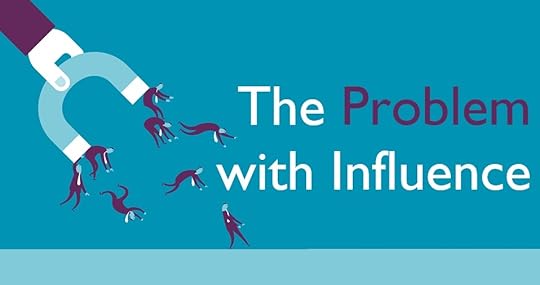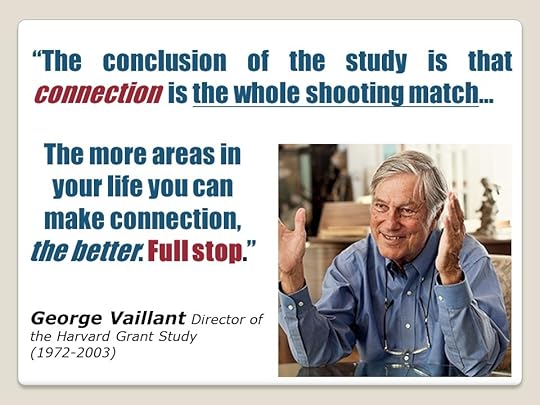Tim David's Blog, page 3
November 20, 2017
No One Can Be Successful Without…
 On Sunday, the American Music Awards honored the most successful music acts in the biz, including a lifetime achievement award for Diana Ross.
On Sunday, the American Music Awards honored the most successful music acts in the biz, including a lifetime achievement award for Diana Ross.
Did you notice that the acceptance speeches all had a clear pattern? They usually do. It seems like nobody can be successful without…
…help.
Every single person thanked someone else for their success. Not one of them did it alone. And no one can do it alone.
Every success story is a support story. (Click HERE to Tweet That)
My new book is no different. Even though I’m leaving the support of Penguin Random House behind and “self-publishing,” I still have an enormous support system behind me.
In fact, the acknowledgement section mentions over 250 people by name. They are directly responsible for any success I’ve had. Like Shawn Mendes said to his fans on Sunday night, “I only look good because of you.”
That’s the key. Lean on each other.
In fact, I’m asking for your help again. I believe in the message of TRUE Influence. I believe that times and technologies have changed and that manipulation tactics no longer work. I believe your biggest impact will come from your integrity. I believe it so strongly that I want to get the message out in a big way.
That’s where you come in.
If you have a podcast, blog, or newsletter (no matter how small!) and want to interview me, I’d love to connect with you. I’ll do everything in my power to make this happen, but obviously there are no guarantees.
To start the process, use this form so I can keep all requests somewhat organized: https://goo.gl/forms/FcqLFnWNrLDIwXL72
In this season of Thanksgiving, remember to acknowledge those who have influenced you. On her big night, even the legendary diva, Diana Ross filled the stage with family and dished out gratitude like candy.
Who will you thank for your next big success? Ask them for help now.
The post No One Can Be Successful Without… appeared first on GoodAtPeople.com.
November 15, 2017
I Did it and I’m Not Sorry – A Letter to My Supporters

Fine. I’m kind of a “public figure” now. I get it. By putting myself out there on the page and the stage, I open myself up for criticism.
And accusations.
Well, it finally happened. I’ve been accused. Just like a real celebrity.
This person said some nasty things to me:
“Why do you even try to be a writer? You have nothing to say worth printing on a page.”
“How dare you try to sell your books? Author? More like a sleazy salesperson!”
“Stop wasting everyone’s time with your dumb emails. No one cares about you.”
“You’re a college dropout. Go back to your little magic tricks.”
I wanted to curl up and die. Then, my instinct was to apologize. Publicly and profusely. After that, I figured I’d just disappear into the shadows for a while so I wouldn’t bother anyone.
Do you ever get a sudden urge to apologize even though you didn’t do anything wrong?
“My cat died.”
“I’m so sorry.”
“Why? Did YOU kill him?”
And here’s the worst part: no one actually said any of those things to me. I only said them to myself. I was my own accuser.
Do you ever get a bad case of “impostor syndrome.” Impostor syndrome is the irrational belief that no matter what you achieve, you never feel like you deserve it. It’s as though you could be discovered as a fraud at any moment.
Well, that feeling hit me hard while writing this book.
So here’s what I did about it…
I SUCKED IT UP.
You know what? It’s a damn good book. I’m NOT sorry I wrote it and I’m NOT sorry that I’m telling everyone about it. Just bang the gavel and say I’m guilty. “Dog shame” me on the internet if you have to. It’s all true.
I’ve spent three years and thousands of dollars bringing my book baby into the world. I hired the best people direct from the world’s best publishing houses. My editor, proofreader, graphic artist, and typographer have all worked on NY Times bestselling books. I’m so proud of what we’ve created together.
I did it and I’m not sorry.
I worked equally hard on the free bonuses. I kept adding value until I could look you in the eyes and say, “This is worth ten times what I’m asking.” For some of you, it’s worth a thousand times what I’m asking. Books have the power to change lives. Why wouldn’t I be bold?
For every negative thought I’ve had, I’ve gotten fifty encouraging emails from readers. Simple messages like:
“New book looks great!”
“Can’t wait to read it.”
“Magic Words changed my life.”
“I’m so proud of you.”
“I just supported you on Thunderclap across multiple platforms to tens of thousands of people.”
We must stop letting our inner critic get between us and the people we can help. You have a gift to share. If you don’t champion it, it will rot on the shelf. DO. NOT. APOLOGIZE.
This is what my new book, TRUE Influence is all about. It’s a guide for getting your message across in a way that connects with people and inspires them to action. If you want to move mountains, you’ve got to be able to move people. More importantly, you’ve got to be able to do it with integrity so that you won’t feel like you have to apologize for it to anyone.
You can buy the book and collect your bonuses now at: http://www.TrueInfluenceBook.com
P.S. You’re welcome.
The post I Did it and I’m Not Sorry – A Letter to My Supporters appeared first on GoodAtPeople.com.
November 9, 2017
New Book Announcement!
I’m so excited to OFFICIALLY announce that my next book will be released on December 5th.
To celebrate, I’ve created and assembled some very special bonus gifts for anyone who pre-orders a copy on or before December 4th. Okay…they’re blatant bribes. Here’s a video explaining everything:
To pre-order, visit: http://www.TrueInfluenceBook.com
P.S. Help spread the word (AND get mentioned by name in the book), by supporting our Thunderclap camp at: http://thndr.me/Qfzsai It’s totally free…just a click of support. Thanks in advance! 
October 31, 2017
The Problem with Influence

In high school, my biggest dream in life was to be a professional magician. I would practice my tricks in my room every single day and imagine what it would be like to be the next David Copperfield. It’s all fun and games until someone drops out of college.
I quickly racked up over $16,000 in credit card debt (which in today’s dollars is roughly $2.9 trillion. Well…it felt like that anyway) and I had to get a side job at the mall to afford my car, gas, insurance, and rent payments. I still lived at home, but my ever-pragmatic father was providing the tough love.
My magic career wasn’t taking off and I couldn’t understand it. By then I was getting pretty good. I mean, I wasn’t teleporting or anything, but I could do some crazy stuff with elastics. I performed at a few little kids’ birthday parties and one of the moms said I was swell.
Why hadn’t I been discovered by a super-famous talent agent? Where were all the television producers? Why wasn’t the world beating a path to my door?
Then a mentor of mine gave it to me straight. He said, “‘Show business’ is two words and business is the bigger one. You got the show, you need the business. Become a student of business. Become a student of sales and marketing. Study the science of influence.”
“Influence?” I shuddered at the very word. “No thanks. If I’m going to trick people, I want it to be with their permission and for entertainment purposes only. I’m not interested in becoming some kind of used car magic pimp. Integrity is important to me.”
“Okay, look at David Blaine. He doesn’t do anything that other magicians can’t do. He’s only famous because of his business savvy.”
“Freaking David Blaine,” I muttered. (When Blaine hit it big, he was the butt of a lot of jokes in the magic community. Sorry, David. We were just jealous.)
“Bad example then. Think of someone else instead. Think of someone you admire for their integrity.”
“Okay, someone like Martin Luther King, Jr. or Abraham Lincoln come to mind right away.”
“Puh-leeze,” he said. “Those are two of the most influential people in history. I thought you wanted to avoid influence because of your ‘integrity’.”
“Fair enough. Definitely my grandmother then. She never tried to influence anybody. She just quietly went about her life with humility, grace, and honor. She always put other people first and never had anything but a smile and a warm cup of tea.”
“Hmmm…Sounds like this grandmother of yours was a pretty big influence on you.”
Check and mate.
For about a week, I remember feeling sick to my stomach at the idea of becoming a salesperson. I felt like Dr. McCoy from Star Trek, “Dammit Jim, I’m a magician, not a business person!”
Maybe you can relate. Maybe you’ve got a skill, a talent, a product, or an idea that you can’t wait to share with the world – so long as you don’t have to be the one to tell them about it. Maybe it’s because you think you’re bad at selling, or maybe it’s because you think selling is inherently bad. After all, many people associate sales with words like “manipulation,” “persuasion,” “coercion,” or even “sleazy” or “creepy”.
If that’s you, then you’re in the right place.
My mentor didn’t stop with the bad news. He didn’t just say, “Influence is a necessary evil. You just have to deal with it.” Sure, it’s necessary, but it isn’t necessarily evil. We don’t have a choice whether we influence others, but we do have a choice in how we influence them.
In the coming weeks, I’m going to be posting about how to become more influential while maintaining your personality and your integrity. This stuff is too important to leave to chance.
Until then, tell me about someone who has influenced you. Comment below!
The post The Problem with Influence appeared first on GoodAtPeople.com.
October 26, 2017
Customer Satisfaction is Lame

Magicians have a goal in everything they do.
They want to “WOW” people.
Most businesses want to wow people too, right? They all talk about “exceeding expectations,” but when’s the last time you did something that made a customer or employee’s eyes bug out while they screamed “OH MY GOSH! STOP IT DAVID BLAINE!”?
Customer service? Customer satisfaction? What kind of lame goals are those? If you’re ever going to influence anyone to care about your product, or your company’s vision, or anything else, then you’re going to have to do better than that. You’re going to have to wow them. You’re going to have to do something new, different, or so amazing that they’re forced to sit up, lean forward, and take notice.
That’s why I parted ways with the largest publisher in the world. (Moron this later…)
How do magicians create unbelievable experiences?
They break the rules.
Objects don’t float. Things don’t disappear into thin air. These are simple rules of physics. BREAK those rules though, and you’ve got yourself something amazing. Something “wow” worthy. Something worth paying attention to.
What do large companies love? Right. Rules.
As an author, my hands were tied up with contracts, rights, subsidiary rights, foreign language translation, copyrights, intellectual property, and on, and on. Can I give away free sample chapters? Nope. Can I sell the book at a discount? Nope. Can we give free bonuses to encourage sales? Nope. Can we add this cool multi-media interactive chapter? Nope. Can I sell the book to libraries? Bookstores? Nope. Nope. Nope.
These are big reasons, that for my next book launch, I’m going solo. And you know what? I’m scared as hell.
How to Know You’re Getting Close to Creating that WOW Factor
“Wow” doesn’t show up when your in your normal “zone.” Business as usual won’t inspire many screams of delight from your audience. Comfortable and familiar will never amaze the way that surprise does.
That’s why I’m so scared. For my next book, I’m stepping WAY outside of my normal “business as usual” zone. I’ve taken a huge risk that might just blow up in my face. I’ll be taking even more risks as the calendar careens recklessly towards the book’s release date. But you know what? My fear is how I know I’m on the right track.
If you don’t worry whether you’re giving too much, then you aren’t giving enough. If you aren’t concerned and tempted to cut corners at least once, then you almost certainly aren’t creating WOW.
People talk about WOW. Nobody talks about boring. Ordinary never goes viral. Basic never creates change.
How do you make WOW?
First, identify the status quo. Label it “bare minimum”. The competition’s ultimate goal is your starting point. (Oh man, Tweet that.)
Second, go bananas. Take risks. Blow their minds. Have fun with this. Get creative. Break the rules. TRULY exceed expectations. And above all, don’t stop there.
To see what big, scary thing I’m doing for my next book launch – stay tuned! Some major announcements coming to your inbox. Make sure you subscribe at the top of this page so you don’t miss anything.
This is going to be…just…
WOW!
The post Customer Satisfaction is Lame appeared first on GoodAtPeople.com.
October 17, 2017
The Influence Troll

Three travelers seeking riches came upon a long bridge.
On the other side was more treasure than they could ever imagine.
When they tried to cross the bridge, however, a troll appeared demanding payment for safe passage.
The first traveler didn’t believe the troll was real, and attempted to make her way across the bridge anyway.
With a flick of his fingers, the troll cast the traveler off the side of the bridge and onto a rock landing below. She was unharmed, but she never reached the treasure.
The second traveler was horrified and ran past the troll to look over the edge of the bridge to his fallen comrade.
“Uh-uh,” warned the troll. “You cannot pass without payment.”
“Have a heart. She’s my friend! You must let me help her!”
The troll softened and granted passage to the second traveler.
“Ha!” cried the second traveler. “You fool!” And he sprinted across the bridge toward the treasure instead. As he neared the end, a second troll appeared. With a disapproving look and a wave of his hand, the hasty traveler was flung of the bridge and into the darkness of the gorge.
The first traveler shows us that influence cannot be ignored. If you want to move mountains, you must be able to move people. We do not have a choice whether we influence, only HOW we influence.
The second traveler shows us that influence is not about manipulation or trickery and it is not something to be used as a tool for selfish gain. The bridge is long. Our actions today will have repercussions down the line.
What the third traveler does is up to you. Every day we have a choice of how we build and use the tool of influence.
What would YOU say or do to create TRUE influence and gain safe passage to the treasure? COMMENT BELOW!
The post The Influence Troll appeared first on GoodAtPeople.com.
October 10, 2017
How to Generate Sudden Interest in Old Ideas
Sudden interest.
It’s the stuff of legend.
Van Gogh died a broke and lonely man. Now he’s one of the most famous artists of all time.
By the time he was 35, all of Herman Melville’s books were out of print and he had only earned about $10,000 from writing in his entire lifetime. Moby Dick got its due acclaim about forty years later, after his death.
Similarly, only a small handful of Emily Dickinson’s poems were published during her lifetime.
Many forward-thinking individuals do not live to see their ideas catch on.
Today, I want to give you a way to create sudden interest in your idea. And preferably, BEFORE you die.
For the past few weeks, there has been sudden, unexplained interest in Magic Words. Here’s my recent sales chart:

My book hasn’t sold like this since it first came out…146 WEEKS AGO!
So, what’s the deal…why the sudden interest?
It turns out that another book with “Magic Words” in its subtitle has been selling very well. Online retailers began offering my book as an upsell and buyers are going for it.
There is a powerful lesson hidden in the psychology here. The customer is essentially saying, “Here’s a book that is similar to another book I already want. Therefore, I must want this book too.”
That’s the key for getting an idea to catch on. Make it similar to an idea they already accept.
Quick story to illustrate how you can use this principle of similarity to move your ideas forward.
The Lion King is a classic Disney movie that almost didn’t get made. The powers that be were having a hard time figuring out what to do with the script. They weren’t sure if they even liked it. Finally, someone used the principle of similarity…
“It’s like Hamlet, but with Lions.”
Click.
Suddenly, everything made sense. Suddenly, the script fell into place. Suddenly, there was INTEREST in getting the film made sooner rather than later.
Use the following formula to generating sudden interest in your own ideas…
“It’s like ___________, but/with/without/for/of _______________”
A few examples…
Dave and Busters: It’s like Chuck E Cheese for adults.
Sport Clips: They’re like Hooters, but for haircuts.
Instagram: It’s like Facebook, but with pictures.
Comment below with your own statement of similarity! Make me understand your business in one sentence.
The post How to Generate Sudden Interest in Old Ideas appeared first on GoodAtPeople.com.
October 3, 2017
Why the Vegas Shooting Happened
Bad things happen.
And this was one of the worst.
If you somehow haven’t heard yet, a gunman opened fire on a crowd in Las Vegas, killed at least 59 people, and injured hundreds more before killing himself.
As a magician, I’ve got a lot of friends in Las Vegas, and I spend a lot of time on the strip (I’ll be there next week, in fact.)
So add that to the list of why the news horrified me.
First and foremost though, was the fact that something like this could even happen. I mean…what are we doing?
More importantly, what can we do to stop it from happening?
Well, I don’t have all the answers. I’m just as blown away by this as I hope you are. (Complacency is a bad sign…watch out for it.)
Do we blame the usual suspects? TV? Violent video games? Religious or political extremism? Lack of gun control? Pharmaceutical companies pushing their mood-altering pills? The news media? The Insane Clown Posse???
I recently read some compelling research on wartime PTSD (post-traumatic stress disorder). The researchers found that it isn’t the constant risk or threat of dying that does all the damage to the brain. It’s the killing that does it.
Even drone pilots, who are far away from the battlefield and in almost zero danger themselves, suffer from PTSD at the same rates as soldiers who are in the thick of battle. But yet, medics and sailors working right alongside those soldiers in the high-risk areas suffered low rates of psychiatric breakdown.
Bottom line: Trying to kill people messes you up more than having people trying to kill you.
Killin’ Ain’t Easy
After the Battle of Gettysburg, something interesting was discovered. Out of the 27,000 single-load muskets recovered, nearly 24,000 of them were loaded, but unfired. Out of those, half were loaded multiple times, but still…unfired.
That’s a lot of soldiers thinking about killing, but never doing so – even with the other guys trying to kill them. “Nah, I’ll just re-load again while they shoot at me.” (Most deaths at Gettysburg were caused by artillery, not infantry.)
There was a similar pattern in WWII. Only 15-20 percent of riflemen ever fired their guns.
Thankfully, looking at another human being through the crosshairs and pulling the trigger ain’t easy.
Unfortunately, We’ve Gotten Better At It.
Militaries train their soldiers better now and technology makes it possible to kill at greater and greater distances.
Wartime propaganda also helps to make killing easier.
They all aim to do one thing…
Dehumanize the enemy.
The Rwandan genocide killed people at five times the rate of the Nazi Holocaust. One out of every seven Rwandans died.
Worse, they were not killed with bombs or tanks, but sticks and machetes. Close-range. Personal.
In order to make that happen, some serious dehumanization needed to take place. It was beyond “Us” vs. “Them” for the Hutus. It was “They are not even human, and every Tutsi must die.”
The Hutus didn’t call them Tutsis though. They called them only cockroaches. Cockroaches that must be stamped out.
That’s the essential ingredient to killing.
That’s what undoubtedly allowed Stephen Paddock to massacre dozens of people, and then immediately massacre dozens more.
Dehumanization.
The Single Greatest Threat to Us…And the Solution
I believe dehumanization is the single greatest threat to our way of life. It can show up in a big way on the Las Vegas strip, or it can show up in small ways every single day.
Some tiny examples of dehumanization:
Someone says, “I hate lawyers”. You nod.
Someone tells a racist joke. You laugh.
An NFL player kneels during the anthem. You want them off your planet.
The lunch table at work erupts in complaints about the boss. You get fired up. “Damn the man!”
It’s a slow killer, but a killer nonetheless.
The solution is to “rehumanize.” Strive to understand their core values – family, freedom, desire for survival, etc. Note the similarities to your own. Imagine what a day is like for “one of them” – start to finish. Consider each person you meet as an individual and not as a member of a group. Engage one or more of “them” in conversation. Ask lots of questions and try not to turn it into a debate.
No, we can’t remove every violent video game from the world or censor every hip hop artist we don’t like or take away everyone’s mobile device or eliminate all the guns, etc. etc.
But we can focus on finding more human connection in our own lives. We can search for opportunities to create small moments of connection at work, or in our families, or in our communities. We can try to find another human buried somewhere in our mind’s “THEM” pile.
If there’s one thing we’ve lost, it’s the small spaces (and the permission) to create connection. Everyone is busy. Everyone is staring at their phone. Everyone is so laser-focused on the bottom line. There is so much content to consume that every waking moment is filled to the brim with hyper-stimulation and nothing is left over for those small moments of connection.
Again, I don’t have all the answers. Maybe I’m just an idealist. All I know is that every time I find a way to insert more human connection into my life, the better things go for me.
Harvard agrees. After an eighty-year, $20 million study, they said this:

You may not have the power to change the whole world, but I guarantee more human connection will change your world.
The post Why the Vegas Shooting Happened appeared first on GoodAtPeople.com.
September 26, 2017
A Call to Connection
“Okay Tim,” you say.
“I get it. It’s important to prioritize human connection in my life. BUT…”
How Do I Get OTHERS to Prioritize Human Connection in THEIR Lives?
Good question. I’m glad I asked it for you.
Here’s a common problem I hear about all the time…
Your employees prefer to email clients instead of picking up the phone and creating a more “real” connection.
Or they text you instead of dropping by your office.
Maybe emails filled with workplace gossip are circulating (and escalating) when a simple face-to-face conversation would clear things up in a second.
Or maybe your kids have been known to text you from all the way across the couch.
It drives you crazy.
YOU make a solid effort to connect with those around you. YOU understand the benefits of doing so. What is WRONG with these people?
Okay, maybe a more effective question would be, how can we help these people see the light? How can we not only change their minds about human connection, but also their behavior?
Maybe you’ve tried before and quickly realized that the obvious ideas DON’T WORK.
You CAN’T simply talk about the virtues of human connection and expect them to change their deeply ingrained habits. Preaching at people is rarely a good idea.
You CAN’T provide them with a step-by-step framework for creating more connection with others and honestly believe that they’re going to comply long-term. Information does not lead to lasting transformation.
You CAN’T just quietly lead by example and hope they pick it up through osmosis.
You CAN’T lay down the law and ram a new set of protocols, scripts, policies, and procedures down their throats. You’ll come off like a nit-picking jerk. Besides, real connection can’t be planned or scripted – you must allow them some autonomy.
To me, this is what true influence and leadership are all about. Helping people to become better at what they do without damaging your relationship along the way. Being liked, being respected, AND getting the job done – it’s the influence trifecta.
So, What CAN You Do?
You can convey a message that has the best chance of creating the behavior change that you want. Yeah, I know…easier said than done.
But it’s only hard because you haven’t been taught the recipe.
The recipe for a message that will inspire has a few essential ingredients. You can add more elements if you wish, but do so cautiously – like you would with a spice. Spices can make a meal taste great in the right quantities, but too much will fill your mouth with the purest Hellfire.
NOTE: You can use this recipe to start any kind of movement you want, but I’m giving them to you here within the context of helping others to prioritize human connection.
The main ingredients of an inspiring message are: a Belief, a Blank, a Because, and a Bad Guy.
A Belief
Beliefs are far more inspiring than facts. What gets people more charged up? Discussions about religion or discussions about mathematics? One is based in belief and the other in observable fact. Even those who have heated debates about mathematics are doing so because of differing beliefs or opinions. Facts just don’t move people like beliefs do.
What do YOU believe? What exactly is your message? What do you want them to do?
One thing to consider…state your belief in the positive. “Can you stop staring at your phone for two minutes, for crying out loud?!?” is crystal-clear on what you DON’T want them to do, but vague and fuzzy about what you DO want them to do. An inspiring message encourages people towards human connection rather than away from something else.
Know what you believe and communicate it clearly and powerfully. A good belief is polarizing. It’s a line in the sand. All or nothing. In or out. That way, when people share your belief, they’ll fight for it.
I BELIEVE: Human connection is worth prioritizing at work and in life.
A Blank
Too much specificity will only confuse your message. Laying out a “12-point plan for human connection” or describing the “27 key elements for creating connection” is just too much to get people on board.
While you want the “what to do” part of your message to be crystal clear (see “Belief”), you want the “how to do it” part to be left blank.
This works great for instances when common sense is not so common. Those times when deep-down, people know what to do, but for some reason, they just aren’t doing it.
Human connection fits the bill.
When you leave blanks, it gives people the freedom to come up with their own ideas and strategies. In the moment, if they can remind themselves to prioritize human connection, they’ll find a way to do it. You don’t have to spell it out for them.
In fact, if you tried to, it would seem like you’re micromanaging them. They’d only resist.
How to Prioritize Human Connection: You’ll figure it out. I trust you.
A Because
A great message answers the deep abiding questions that continually plague our minds…
“So what?”
“Who cares?”
“What’s the big deal?”
“What’s in it for me?”
Simon Sinek’s famous TED talk told us that “People don’t buy what you do, they buy why you do it.” When it comes to your ideas, if you want people to buy, you’ve got to give them a why.
An inspiring message communicates a strong because. It articulates the reasons why. It’s optimistic about the possible outcomes and hopeful for the future.
BECAUSE: Human connection brings TRUE success happiness, fulfillment, and joy.
A Bad Guy
Influential communication boils down to great storytelling.
Every good story has conflict, and every good conflict has stakes. The tougher and meaner the villain, and the higher the stakes, the better the story.
What is preventing us from connecting? What obstacles do we need to overcome? What happens if we don’t connect with one another? What if our entire species forgets how? What will happen to our own success, happiness, fulfillment, and joy?
Nothing binds people together like a common enemy.
THE BAD GUYS: Social Media? Greed? Selfishness? Fear? Complacency? All of the above?
Your homework: Develop your own call to connection. Share it with those around you. Repeat it until they’re sick of it. More importantly, live it out yourself. Even the biggest movements start out small.
Brainstorm yours in the comments below.
The post A Call to Connection appeared first on GoodAtPeople.com.
September 17, 2017
What I Teach is Stupid…Unless
Human connection.
It’s kind of important.
Sales, leadership, innovation, marriage, parenting, life.
It makes us better at everything we do – and it makes us happier and healthier in the process.
But how do you create more of it?
There are a bunch of ways. I should know. I make my living by helping individuals and organizations do just that.
But do you want to know a secret?
There’s only one thing that really matters.
In fact, without this one thing, all the other ways I teach suddenly seem rather silly. Or even downright stupid.
Let me ask you something. How can you tell whether you feel connected to your co-workers? How do you know that you’re part of a solid, unified team? When was the moment you formed a relationship with your best clients instead of just exchanging transactions?
Exactly what day did your spouse begin to trust you?
Human connection isn’t a tangible thing. There is no way to pinpoint the moment it arrives between two people. You can’t objectively and scientifically measure people as either “connected” or “not connected.” There isn’t a gene, or a facial expression, or even a magic word that is a dead-giveaway for connection.
For example, does smiling create connection?
Well, yes…and no.
One smile is not going to magically and instantly turn two complete strangers into besties.
Is it a good start? Of course.
But did I write to you just to tell you the “secret” of smiling?
No way. I didn’t immerse myself in human connection research for years just to come down the mountain with stone tablets chiseled with “Thou shalt smile more”.
It’s silly. Stupid even.
I KNOW people think advice like that is stupid because they tell me things like, “Tim, that’s stupid advice.”
Just this week I got a comment on one of my YouTube videos teaching some of that “stupid” advice. Here’s what he wrote:
Scam. Don’t work. I’ve been a servant leader for over a decade and still am. People are going to suck unless they decide not to.
Yeah. You sound JUST like a servant leader. And I’m confused. Why are you still claiming to be a servant leader if it’s a scam and doesn’t work? (I mean, if it “don’t work.”) And oh by the way, you’ve totally busted my “scam” of posting free videos on YouTube. I’m so embarrassed now that my operation has been exposed.
Look, I don’t know this guy and I certainly have no way of knowing whether he has in fact been a servant leader for a decade and counting.
But I’ve heard this type of thing before and it always boils down to the same problem.
They’re all missing the “One Thing”.
Yes, they know how to connect. They smile, they say “thank you,” they turn off their cell phone during the meeting, they ask about your day and listen politely, etc. etc.
What they don’t have is CONSISTENCY.
They smile at a prospect and then claim that smiling “don’t work” when they don’t make the sale.
Nope. Connection requires small moments, over and over, consistently.
It’s like building trust. Or falling in love.
Hard to achieve in a moment, but easy to destroy in a moment.
If connection is going to “work” for you, you must prioritize it. Every day. Every time. You must find and create tiny moments of connection. Nothing Earth-shattering. Just go for 1% improvement every day. It will add up, I promise.
That’s the whole point…it adds up. Connection is cumulative. It’s long-term. It’s not a technique. It’s a trait.
So become a person who consistently prioritizes human connection. Develop the trait. Build the habit. Switch from a sprint mindset to a marathon mindset. Take the road less traveled in a technologically advanced world of social media, texting, and artificially intelligent toys.
And what the heck…smile more.
The post What I Teach is Stupid…Unless appeared first on GoodAtPeople.com.



